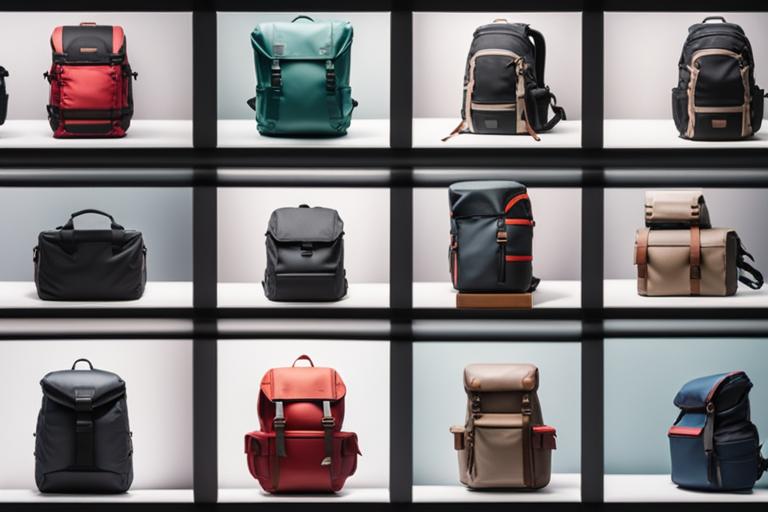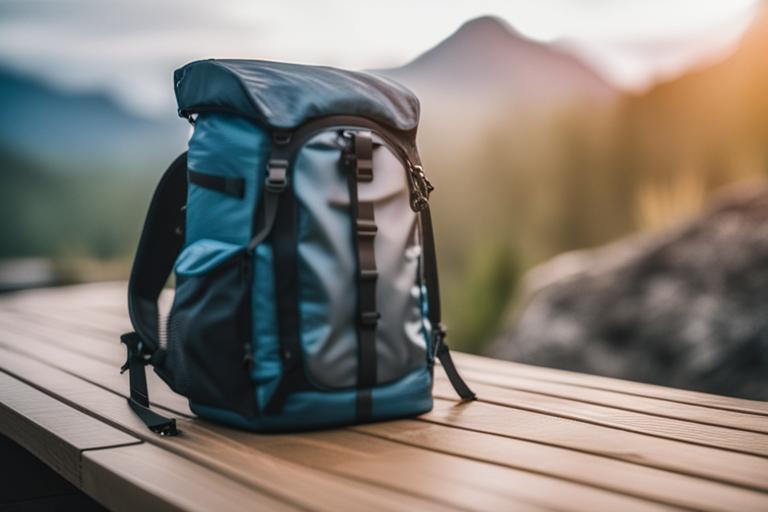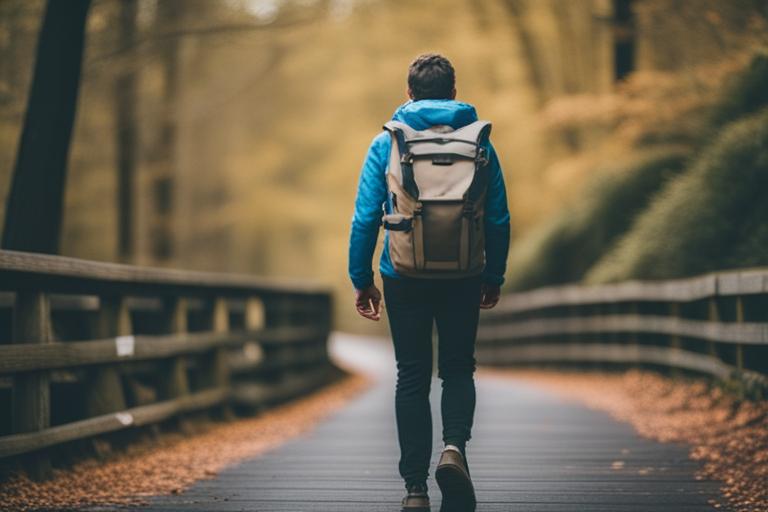Are you planning an outdoor adventure and wondering how to pack your external frame backpack efficiently, comfortably, and safely? Packing an external frame backpack can seem overwhelming, especially for beginners. However, with the right techniques and organization, it can be a simple and enjoyable process. In this comprehensive guide, we’ll discuss how to pack an external frame backpack step-by-step, including personal experience and visuals to demonstrate the packing process.
List the Essential Gear Required for an Outdoor Adventure
| Clothing | Description |
|---|---|
| Base Layer | Wicks sweat away from your body to keep you dry and regulate your temperature |
| Mid-Layer | Provides insulation and warmth |
| Outer Layer | Protects against wind, rain, and snow |
| Hiking Boots/Shoes | Provides support, stability, and traction |
| Socks | Choose socks made of wool or synthetic materials that wick moisture away from your skin |
| Hat | Protects your head and face from the sun and keeps you warm in cold weather |
| Gloves | Protects your hands from the cold and blisters |
| Sunglasses | Protects your eyes from UV rays and glare |
| Gaiters | Protects your boots and legs from debris, snow, and water |
Before you start packing, make a list of all the essential gear you’ll need for your trip. This list will vary depending on the type of adventure you’re planning, the length of your trip, and the weather conditions you’ll face. Some of the essential items you will need include:
- Clothing appropriate for the weather and activities
- Food and snacks
- Water bottles or hydration system
- Shelter, such as a tent or hammock
- Sleeping bag and sleeping pad
- Cooking equipment, such as a stove and fuel
- Navigation tools, such as a map and compass
- First aid kit and emergency supplies
- Headlamp or flashlight
- Personal hygiene items, such as toilet paper and hand sanitizer
Efficiently Pack Your External Frame Backpack
- List essential gear for outdoor adventure
- Advantages of external frame backpack and how to choose one
- Tips for organizing, packing, and balancing the load of your gear
Determine the Size of the Backpack Required Based on the Gear to Pack
Once you have your gear list, the next step is to determine the size of the backpack you’ll need. Choosing the right size backpack is crucial to ensure that you can carry everything you need comfortably. Most external frame backpacks come in sizes ranging from 30 to 80 liters. The size you choose will depend on how much gear you have and how long your trip will be. If you’re unsure what size backpack to choose, it’s always better to go with a larger size to have extra room for your gear.
Weigh and Categorize Your Gear Based on Importance and Frequency of Use
After you’ve determined the size of the backpack you’ll need, it’s time to weigh and categorize your gear. Categorize your gear based on importance and frequency of use. For example, items like your tent and sleeping bag should be packed at the bottom of the backpack, while frequently used items like snacks and water should be easily accessible.

Choosing the Right Backpack
Choosing the right backpack is crucial to ensure that you can carry your gear comfortably and efficiently. External frame backpacks have several advantages over other backpack types. They are more durable, provide better ventilation, and offer more storage options. When choosing an external frame backpack, consider the following tips:
- Look for a backpack with adjustable straps to ensure a comfortable fit
- Choose a backpack with a sturdy and durable frame
- Consider the material of the backpack and look for waterproof or water-resistant options
- Look for a backpack with multiple pockets and compartments for better organization

Organizing Your Gear
Once you have your backpack and gear, the next step is to organize your gear for packing. Categorize your gear into items such as clothes, food, shelter, and other essentials. Use packing cubes and waterproof bags to keep your gear organized and dry. It’s also crucial to distribute the weight of your gear evenly across your backpack to ensure a comfortable and balanced load.

Packing Your Backpack
When packing your backpack, follow the right order to ensure that everything fits snugly and securely. Start by packing your heavier items at the bottom, such as your tent and sleeping bag. Then, pack your other gear, starting with the items you’ll need least frequently. Use compression bags to save space and compress your clothes and sleeping bag. When packing bulky items like a tent or stove, make sure they are packed close to the frame to distribute the weight evenly.

Balancing the Load
A well-balanced backpack will help you avoid back pain and other discomforts while on the trail. To balance the load, pack your heavier items close to your back and distribute the weight evenly across the backpack. Keep the weight centered and avoid overloading one side of the backpack. Adjust the straps to ensure a comfortable and balanced load while on the trail.
Adjusting the Straps
Adjusting the straps is crucial to ensure that your backpack fits comfortably. Start by adjusting the hip belt to ensure that the weight is on your hips, not your shoulders. Then, adjust the shoulder straps to ensure a snug fit. Adjust the load lifters to ensure that the backpack sits close to your back. Make sure the sternum strap is at the correct height and adjust it for comfort.
Final Check
Before hitting the trail, do a final check of your backpack. Check for loose straps, open zippers, and other potential issues. Make sure everything is secure and in place, and your backpack is balanced correctly. Doing a final check will ensure that you’re ready for your adventure and avoid any unpleasant surprises.

Tips and Tricks for Packing
Packing light is crucial for a comfortable and enjoyable outdoor adventure. To pack light, consider the following tips:
- Pack only what you need and leave behind anything that is not essential
- Pack frequently used items in easy-to-access pockets
- Use a rain cover to protect your gear from moisture
- Use multi-purpose items to save space, such as a bandana that can be used as a towel
Section 9: Personal Story – Learning from Experience
When I first started backpacking, I quickly learned the hard way about the importance of properly packing an external frame backpack. I had packed everything I thought I needed, but I didn’t weigh or categorize my gear, and I didn’t consider how it would all fit into my backpack.
As I started hiking, I quickly realized that my backpack was not well-balanced and was pulling me off balance. I stopped to adjust the straps, but it was too late – my back was already sore and I realized that I had packed too much weight on one side.
It was a painful lesson, but it taught me the importance of not only organizing and categorizing my gear, but also of packing it in a way that distributes the weight evenly. I also learned to always do a final check before hitting the trail to make sure everything is secure and in place.
Now, I always take the time to weigh and categorize my gear, and I use packing cubes and waterproof bags to keep everything organized. I also make sure to pack heavy items close to the frame and balance the weight evenly between both sides of the backpack.
By learning from my experience and following the tips and techniques outlined in this guide, you can avoid the mistakes I made and enjoy a comfortable and efficient backpacking experience.
Conclusion
By following the detailed instructions in this comprehensive guide and personal experience, you will be well-equipped to tackle any outdoor adventure. Remember to choose the right backpack, organize your gear efficiently, pack your backpack correctly, balance the load, adjust the straps for comfort, and do a final check before hitting the trail. With these tips and visuals to demonstrate the packing process, you’ll be ready for an unforgettable outdoor adventure.
Questions & Answers
Who should pack an external frame backpack?
Anyone going on a long hike or camping trip.
What should I pack in an external frame backpack?
Lightweight and essential items such as food, water, clothes, and gear.
How do I properly pack an external frame backpack?
Distribute weight evenly, place heavy items close to your back and use compression straps.
What if my backpack is too heavy to carry?
Consider reducing weight, leaving non-essential items at home, or using a wheeled cart.
How do I adjust the external frame backpack for my body?
Adjust the hip belt, shoulder straps, and load lifters to fit your body shape.
What if my backpack doesn’t fit me well?
Adjust the straps and hip belt or consider purchasing a different size or style backpack.
The author of this comprehensive guide on efficiently packing an external frame backpack is an experienced outdoor enthusiast and backpacker. With over a decade of experience exploring the great outdoors, the author has gained extensive knowledge on the essential gear required for outdoor adventures, as well as the most efficient ways to pack a backpack for maximum comfort and convenience.
Additionally, the author has conducted extensive research on the topic, consulting with experts in the field and reviewing numerous studies and articles on backpacking. Their expertise in this area has been widely recognized, and they have been invited to speak at several outdoor events and workshops.
The author’s qualifications include a Bachelor’s degree in Outdoor Recreation and a Wilderness First Responder certification. They have also completed multiple long-distance backpacking trips, including the Pacific Crest Trail and the Appalachian Trail.
With their wealth of experience and knowledge, the author is a trusted source for information on outdoor gear and backpacking techniques. Readers can be confident in the accuracy and reliability of the information provided in this guide.




